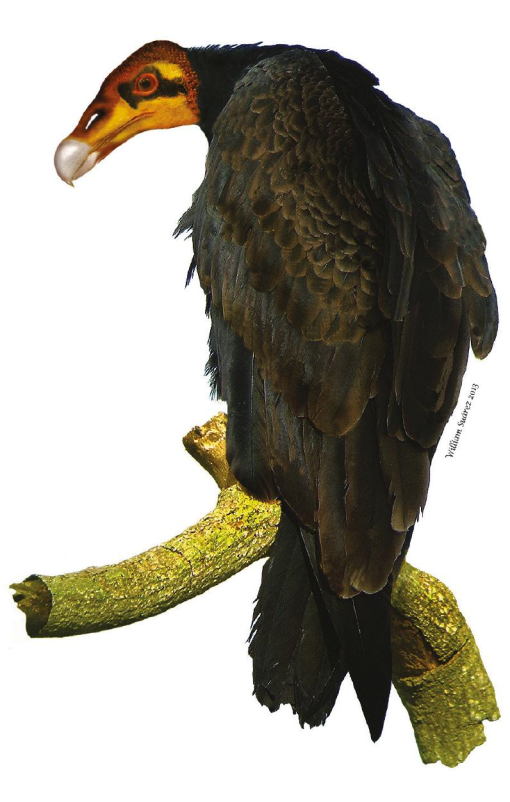
A new study reveals a newly identified vulture species from fossils found in Cuba. The new vulture, named Emslie’s Vulture, is extinct and is a New World vulture species that belongs to the genera Cathartes.
The new (extinct) vulture species in Cuba
Over the past few years, palaeontologists found several fossils, which could belong to a new vulture species that had not been identified yet. They recently discovered additional and better-preserved fossils in Quaternary asphalt deposits at Las Breas de San Felipe, Matanzas, Cuba, which helped them identify a new vulture species endemic to the Greater Antilles.
The new vulture is a small species of the Cathartes, which isone of the five genera of New World vultures found in the Americas. According to the findings, the species existed from Late Pleistocene to Holocene epoch, as recently as 5,000 years ago. The researchers explain that the newly identified species, named Emslie’s Vulture (Cathartes emsliei), seems to be derived from a Central American ancestor instead of a North American one, unlike the two other extinct Cuban taxa in the genera Coragyps and Gymnogyps. They further describe that “skulls with massive and large bills, compared to continental congeners, are common adaptations in Cuban carrion-eaters.” Finally, they hypothesise that Emslie’s Vulture preferred grassland, savanna and open habitats in marshes and mangroves, rather than forests due to its close affinity to the Lesser Yellow-headed Vulture (Cathartes burrovianus).
Cuban scavengers evolved in the complete absence of carnivorous mammals and were highly specialised. However, the extinction of large Mammals in Cuba and the loss of open habitats led to the population decline and final extinction of endemic Cuban vultures during the Holocene. Today, the Turkey Vulture (Cathartes aura) and Black Vulture (Coragyps atratus) form part of Cuba’s modern avifauna, but they are rather rare.
Source
William Suárez & Storrs L. Olson. 2020. A new fossil vulture (Cathartidae: Cathartes) from Quaternary asphalt and cave deposits in Cuba. Bulletin of the British Ornithologists’ Club 140 (3): 335-343; doi: https://doi.org/10.25226/bboc.v140i3.2020.a6
Old World vs New World Vultures
Vultures occur on all continents except Antarctica and Australia. There are two groups: ‘Old World’ and ‘New World’ vultures. The New World vultures are found in North and South America and the Old World vultures in Africa, Asia and Europe. The groups are not closely related; the resemblances arose by convergent evolution.
A big difference between old and new world vultures is that old world vultures depend on sight to find food whereas many new world vultures have a very good sense of smell (which is unusual for birds) and can smell dead animals from a distance of up to two kilometres.
Stay tuned with vultures by signing up to the VCF’s monthly newsletter.



